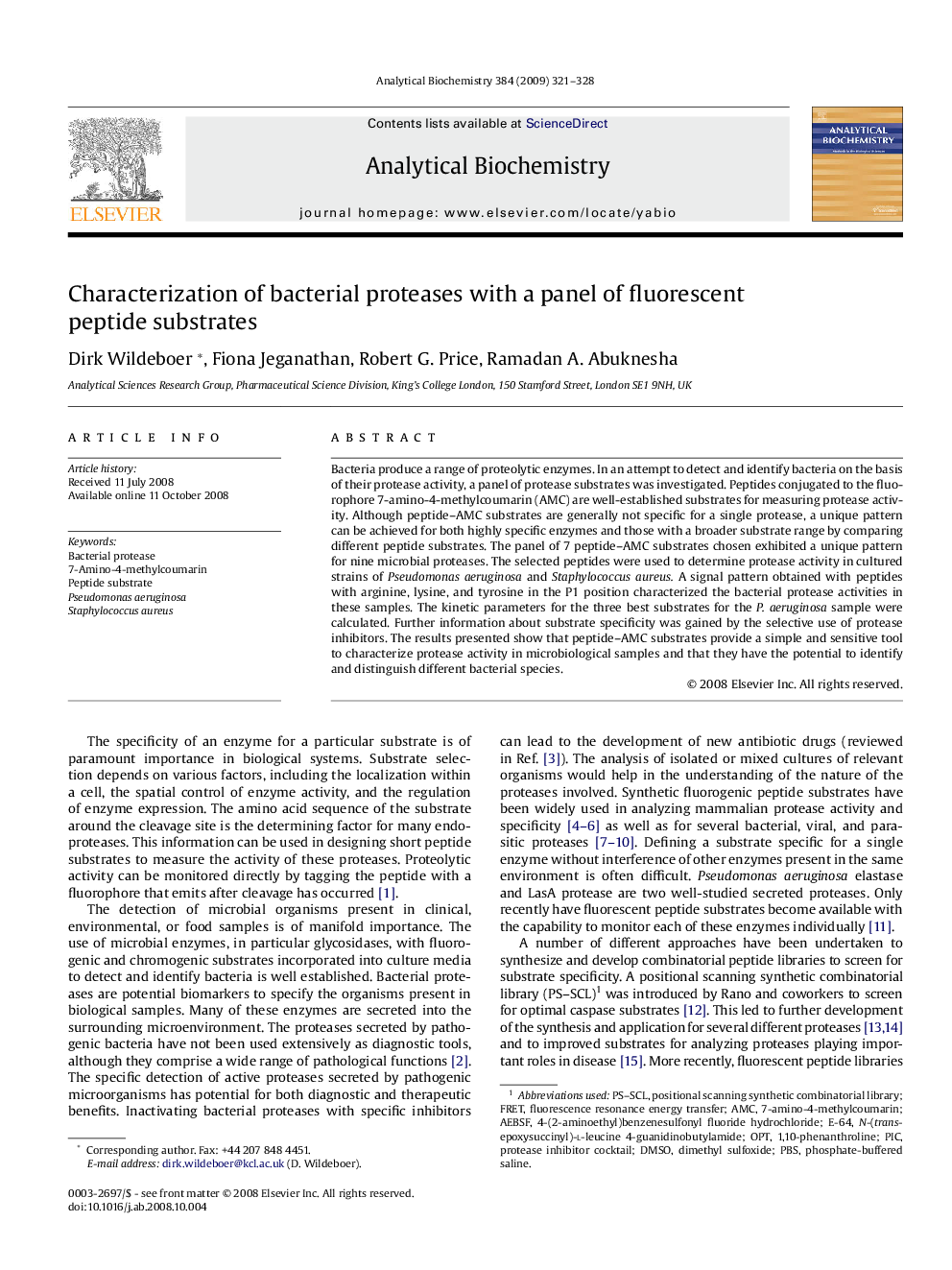| Article ID | Journal | Published Year | Pages | File Type |
|---|---|---|---|---|
| 1177132 | Analytical Biochemistry | 2009 | 8 Pages |
Bacteria produce a range of proteolytic enzymes. In an attempt to detect and identify bacteria on the basis of their protease activity, a panel of protease substrates was investigated. Peptides conjugated to the fluorophore 7-amino-4-methylcoumarin (AMC) are well-established substrates for measuring protease activity. Although peptide–AMC substrates are generally not specific for a single protease, a unique pattern can be achieved for both highly specific enzymes and those with a broader substrate range by comparing different peptide substrates. The panel of 7 peptide–AMC substrates chosen exhibited a unique pattern for nine microbial proteases. The selected peptides were used to determine protease activity in cultured strains of Pseudomonas aeruginosa and Staphylococcus aureus. A signal pattern obtained with peptides with arginine, lysine, and tyrosine in the P1 position characterized the bacterial protease activities in these samples. The kinetic parameters for the three best substrates for the P. aeruginosa sample were calculated. Further information about substrate specificity was gained by the selective use of protease inhibitors. The results presented show that peptide–AMC substrates provide a simple and sensitive tool to characterize protease activity in microbiological samples and that they have the potential to identify and distinguish different bacterial species.
